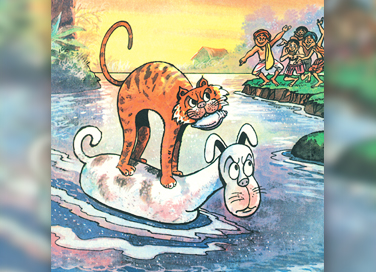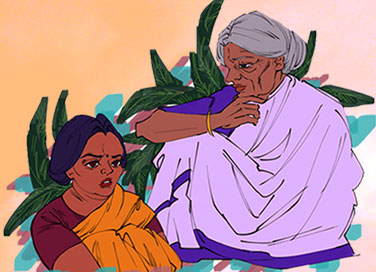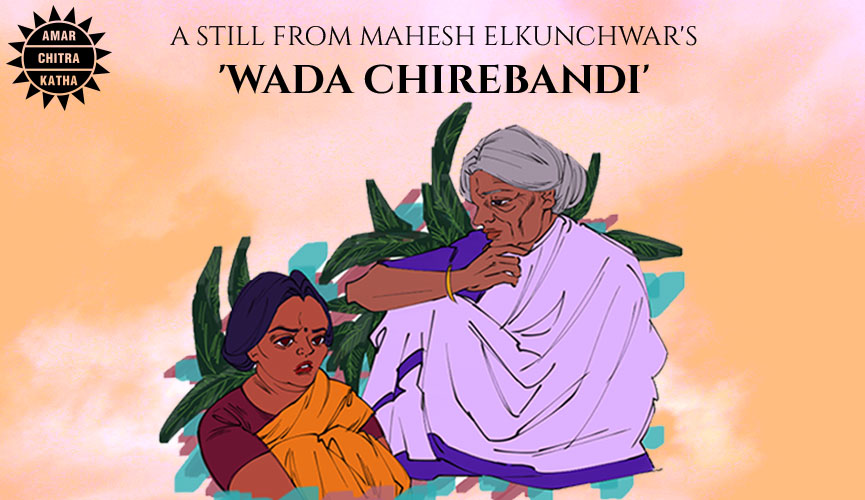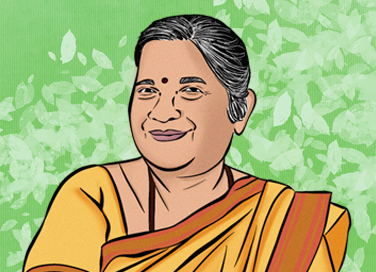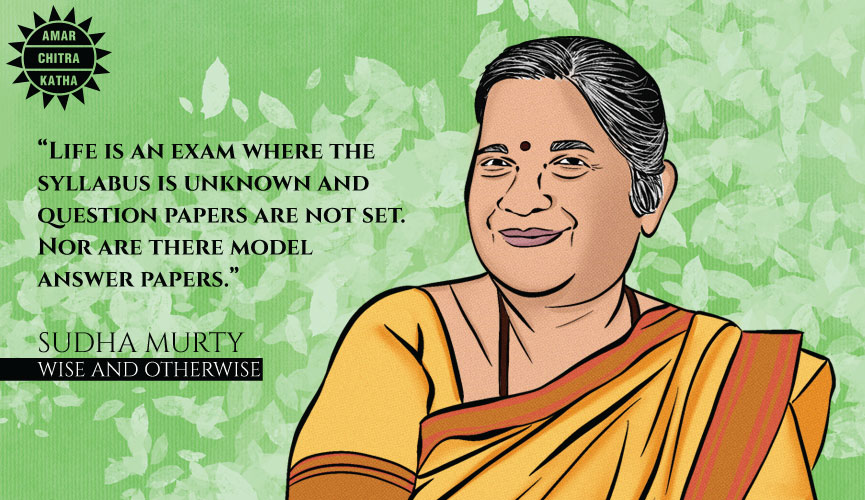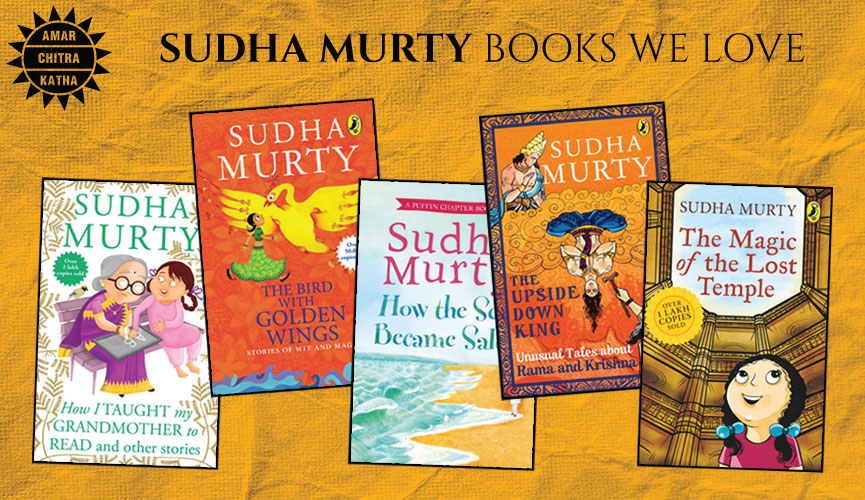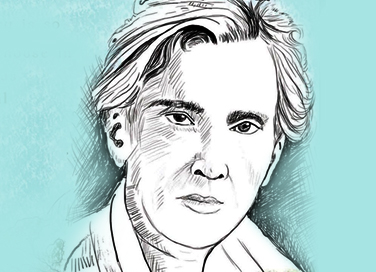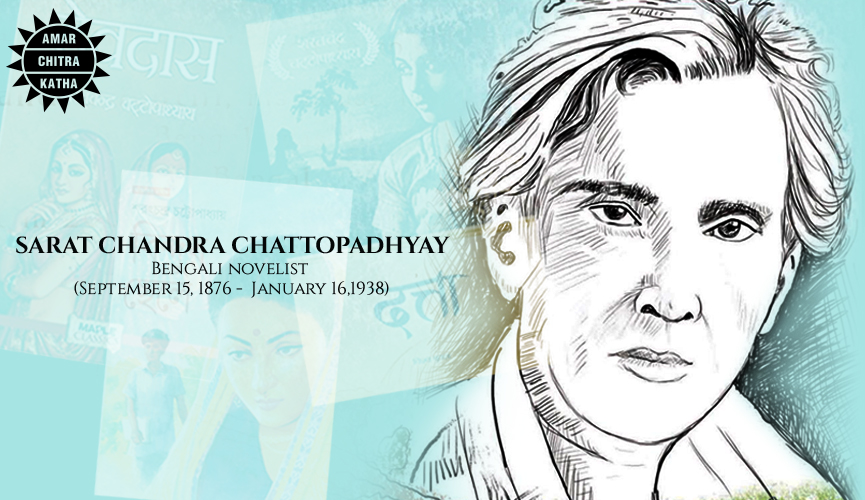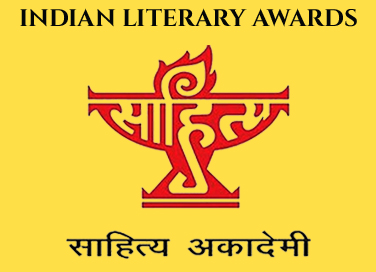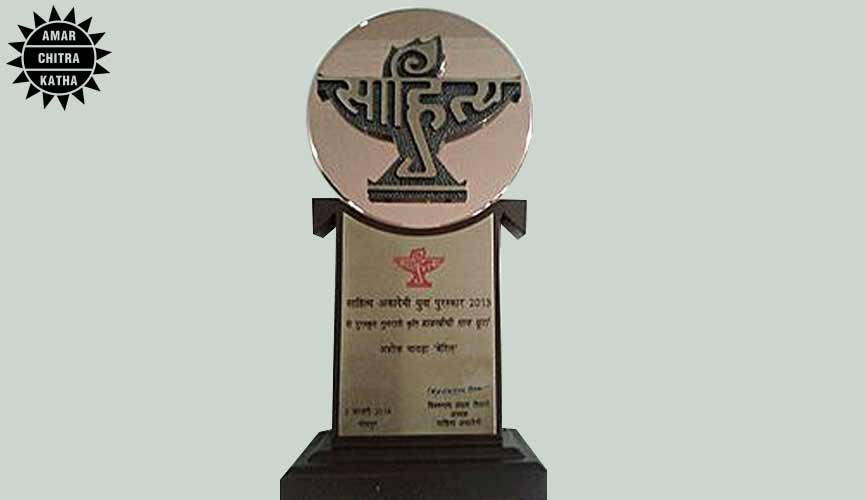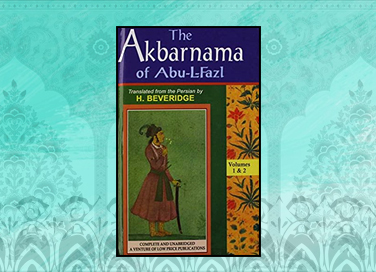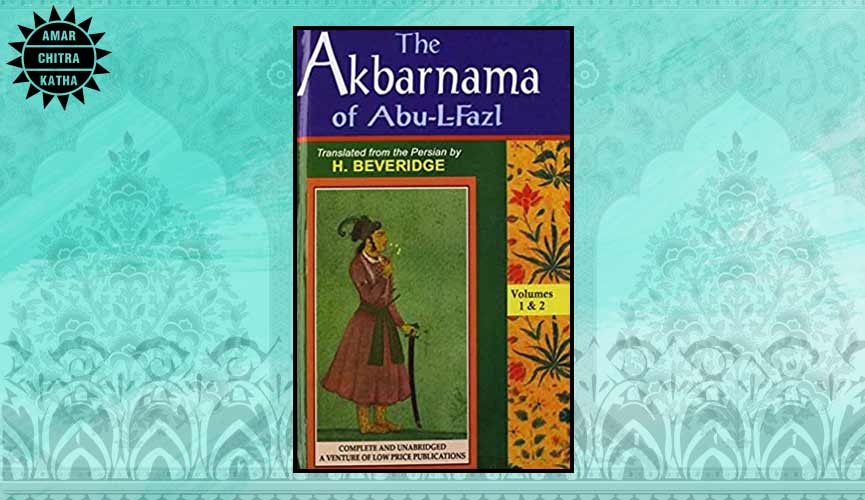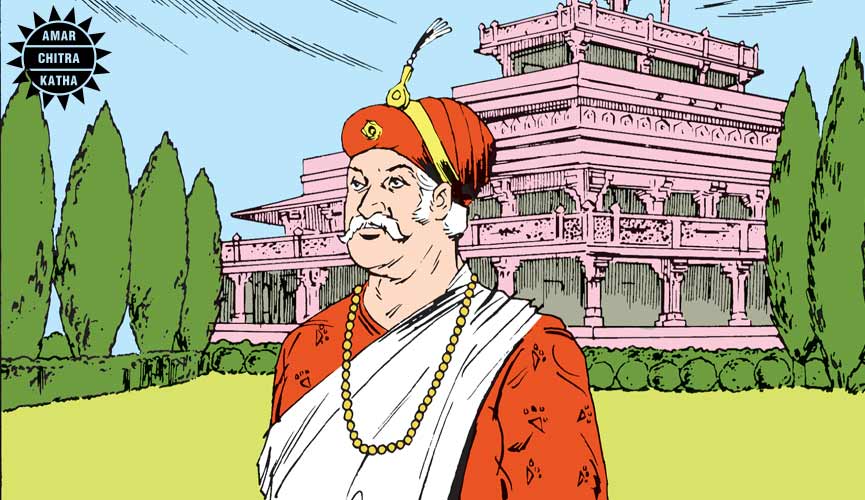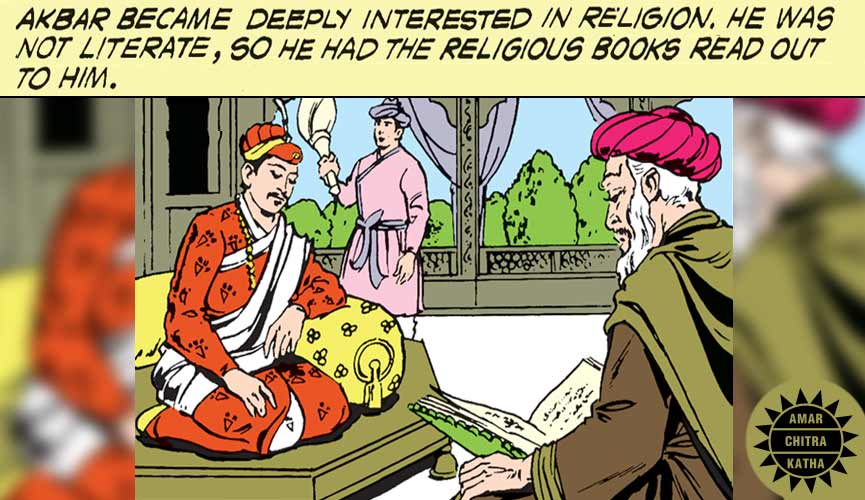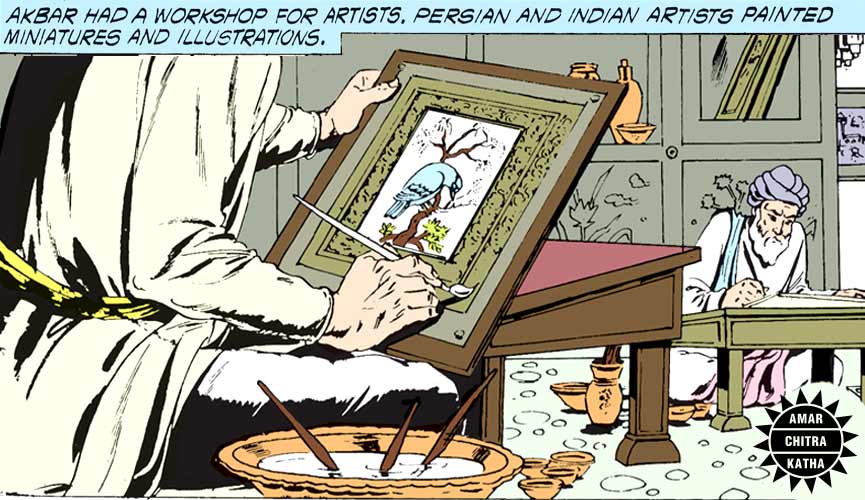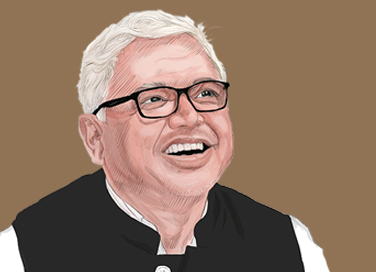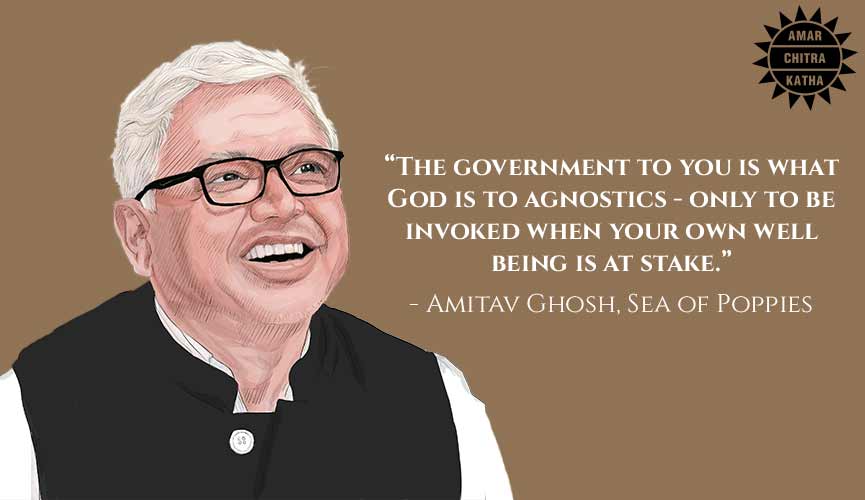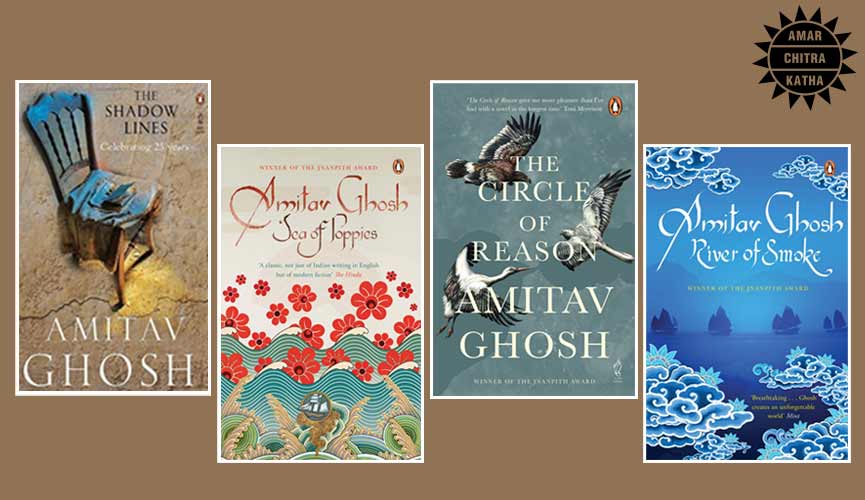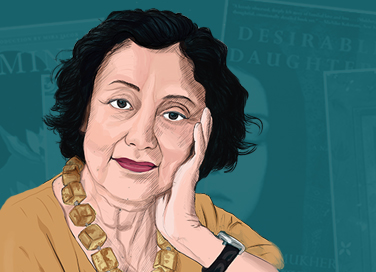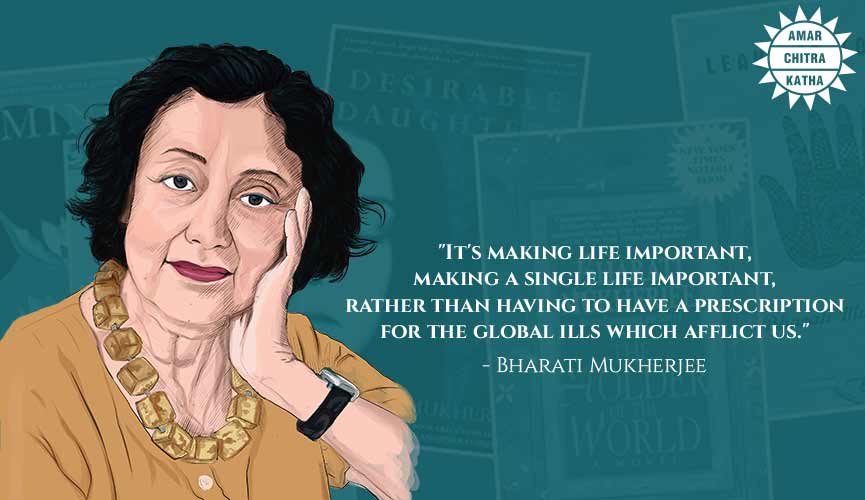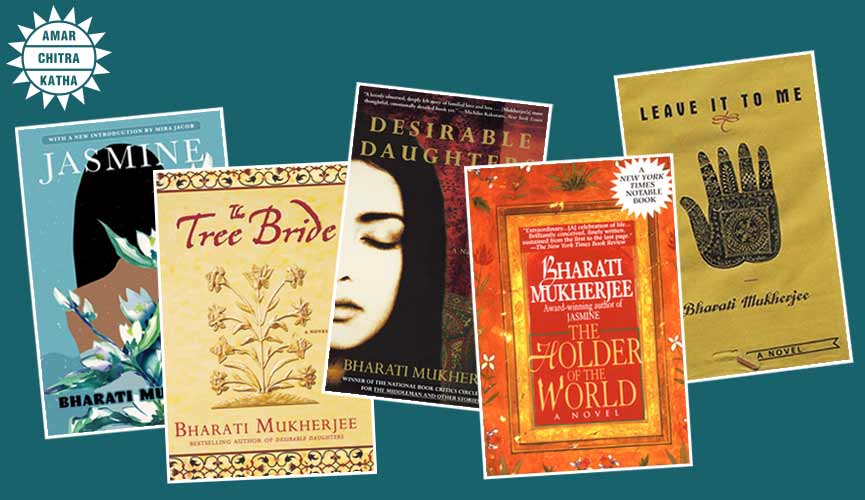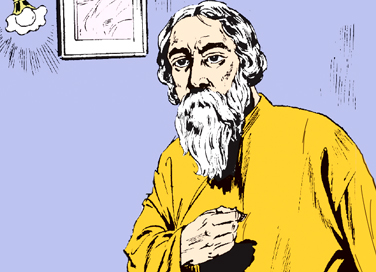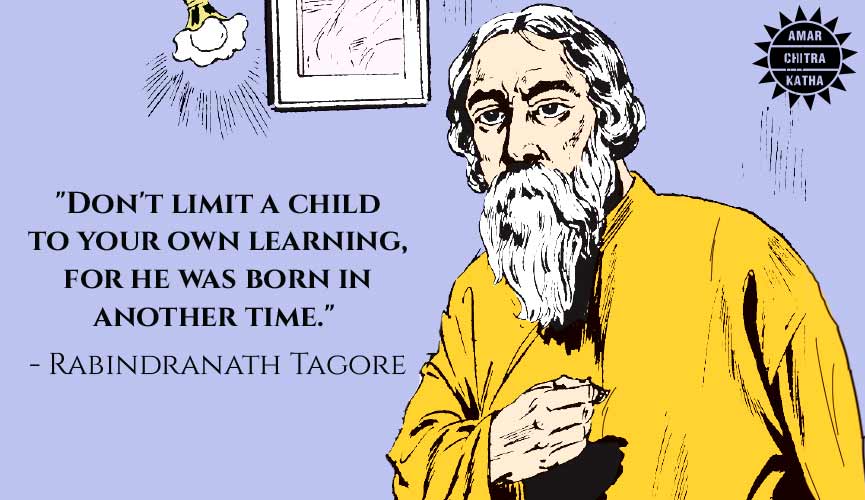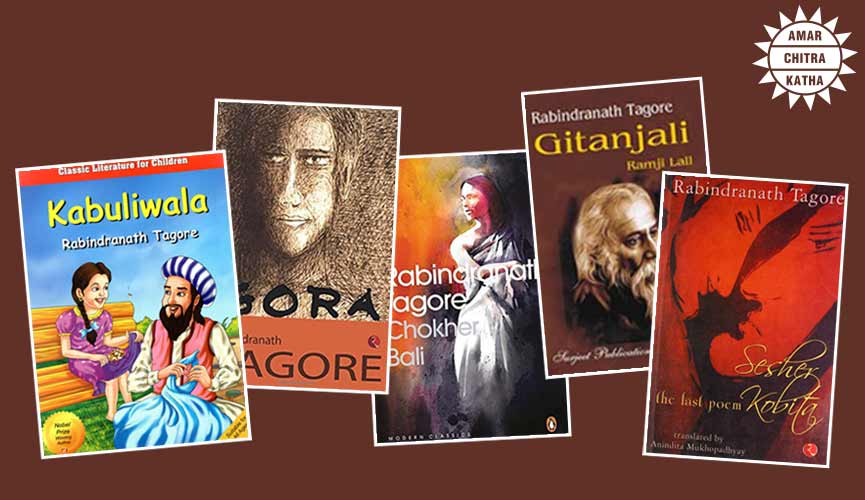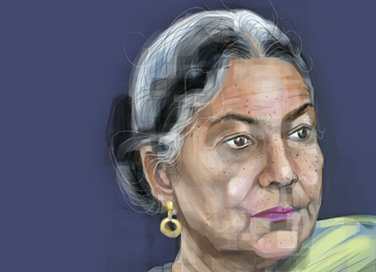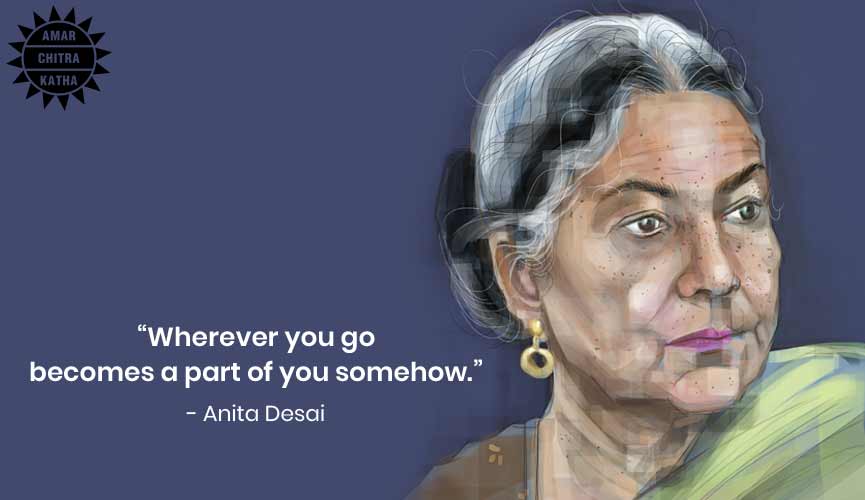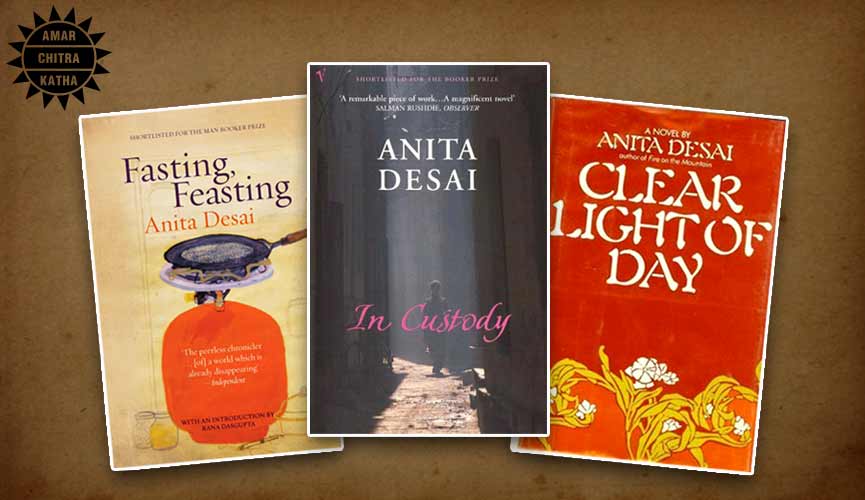Once there lived an old man who was poor but generous. He lived in a small hut with his cat and dog. One night, a weary traveller knocked at his door, asking for some food. The old man didn’t have much but he gave away whatever food he had, including the dry chapatis kept for the dog and the cat, to the stranger. The stranger ate every last morsel, and then asked if he could rest there for the night. The old man offered his bed to the traveller and slept on the floor with his hungry companions.
Refreshed by the night’s meal and rest, the grateful traveller left the old man a parting gift – a conch.
“Drop the conch into your pot the next time you cook rice,” he explained.
Though confused, the old man did not question it. The cat, on the other hand, was annoyed.
“What’s the use of a conch? Now if it had been money, our master could have fed us. We haven’t eaten since yesterday!” he grumbled.
That afternoon, the old man decided to test the stranger’s gift. As soon as he did, a delicious aroma rose from the pot of rice! The scent wafted far and wide, attracting many people. When they asked to have some, the old man could not deny them. However, a massive number of people had lined up.
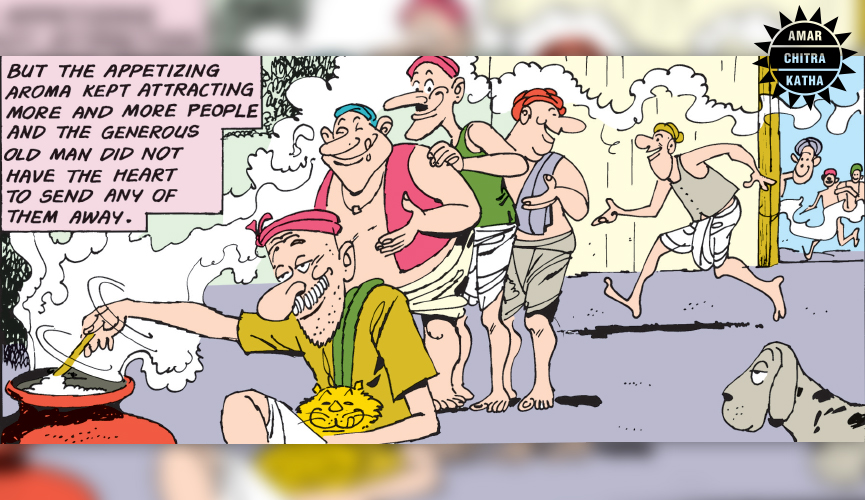
“I can only give each of them a few grains, or the pot will be empty before I know it!”
Thinking so, the old man began serving a small morsel each. The hungry cat was irked by his master’s kindness.
“Well, looks like we will be going hungry again,” he said to the dog.
Even if he was hungry himself, the dog didn’t say a thing. He liked that his master was a kind man.
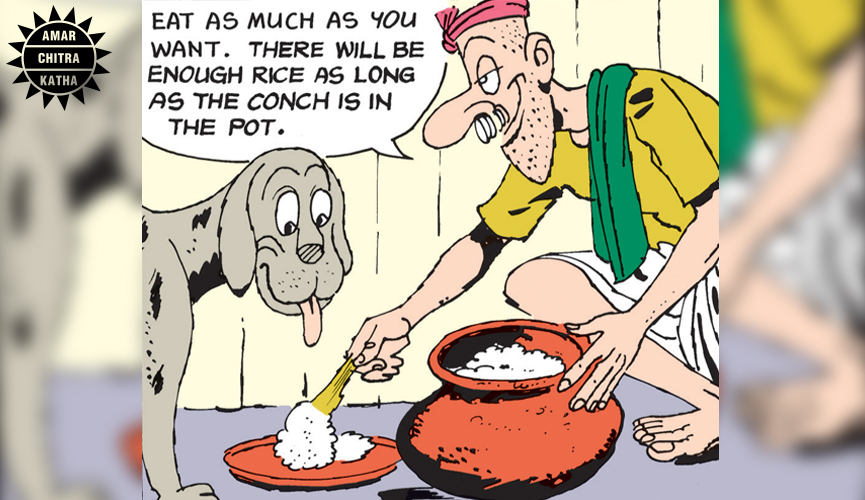
When the old man had finished serving all of them, he noticed that the pot was far from empty! So he offered all of them second helpings. Still, the pot was quite full. Once his guests had had their fill, he fed his companions.
“Here you go, I’m sorry you had to starve last night. Now that we have this conch, it will never happen again!”
The cat’s ears perked up at that.
“You hear that, dog, never again!” he rejoiced.
Every day, the old man cooked his “special” rice and people flocked to his hut for a share. Soon, there were so many that he started to charge them a small price for the rice, which the people were happy to pay. The cat and dog too had become fat with all the food they were eating, without doing any work.
Days and weeks passed this way. One morning, the old man’s first customers were some travellers. They bought a lot of rice from him and packed it to take it with them for the journey. Later, as he served more customers, he noticed that the rice was depleting! He ladled out more rice to see if his eyes were being deceived but the rice was indeed decreasing. Panicked, he began looking for the conch in the pot. It was nowhere to be found.
“Oh no! I must have given it to the travellers!” he thought.

He rushed out, hoping that they hadn’t gone too far. The cat and dog looked on, wondering what was wrong. Seeing his master so worried, the dog chased behind him. Upon seeing the dog, the master directed him to find the travellers. They searched the whole village but there seemed to be no trace of them.
“Our good days are over. I’ll never see that conch again,” the old man lamented.
When they returned home empty-handed, the cat demanded to know what happened.
“The conch is lost. Master thinks it went with the travellers’ food,” he said.
The cat was aghast at the thought of starving again. The villagers, too, wondered why the old man had stopped cooking his delicious rice. Some of them went to enquire about it. When they heard the old man mumble about a lost conch in response, they worried that he was going mad. Soon, the news of his madness spread and everyone that once flocked there began to avoid his hut.
In the beginning, the old man had enough money from the business to feed himself and his companions. As the money ran short, he began serving less food. The cat was grumpy again.
“See how little we got today. Tomorrow, it will be lesser.”
The dog was annoyed by the cat’s tirade.
“It’s no use complaining. He feeds us before he feeds himself, it’s time we did something to help our master.”
“Well, what do you suggest?” the cat asked.
“We could look for the conch. If we find it, all our problems will be solved!”
“The conch?! Who knows where it is? That is so much work,” the cat whined.
“Do you have a better idea? If not, we are going to go with this plan,” the dog said finally.
Having no other choice, the cat unhappily complied.
Together, they reached the river across which they suspected the travellers had gone. The cat couldn’t swim, so he climbed onto the dog’s back and they crossed the river and went on to sniff every house in the village until they were met with the aroma of the special rice from a house. They entered the house and followed the scent, which led them to a locked trunk.
“Well, we can’t break into that, can we?” asked the cat.
“Well, it depends,” the dog said. “Can you catch a mouse?”
The cat took up this challenge. As soon as he spotted a rat, he pounced on it and clutched it in his paw. “Please spare me!” the rat begged. “We will let you go if you do as told,” said the dog. The dog then asked the rat to gnaw at the trunk and bring the conch out to them. As soon as the rat pushed out the conch, the owner of the house stepped in. He was about to chase the animals away when he noticed that the dog had the conch in his mouth!
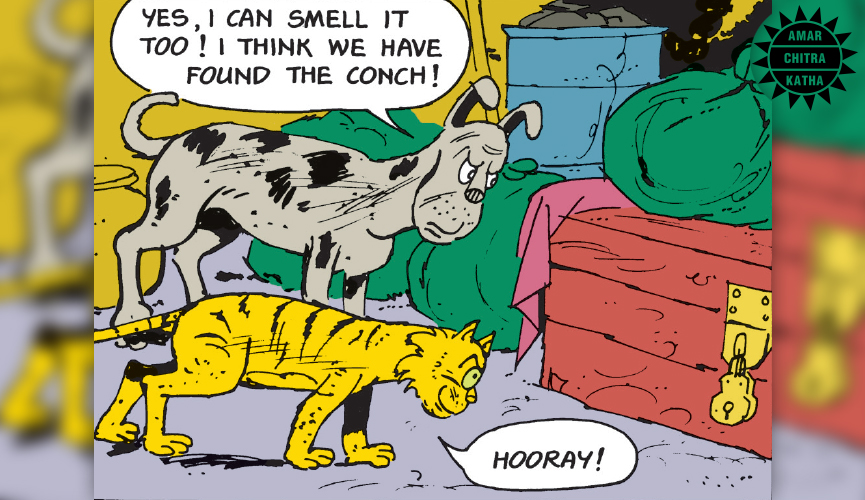
“Hey, you pests! Drop that conch right away!” he yelled after them.
When the villagers heard the ruckus and came out, he told them to follow them too.
“Those two entered my house and took my conch! Catch them!”
The villagers chased after them but the duo dodged them and reached the river.
To cross the river, the dog asked the cat to hold the conch in his mouth and climb onto the dog’s back. As they began swimming, some villagers nearby looked at them and started laughing. Hearing them laugh, the cat laughed along with his mouth wide open. The conch fell into the river. “Oh, stupid cat!” the dog said, as he dived in to find the conch. The cat, not expecting the fall, almost drowned, for he could not swim. Somehow, he beat his legs wildly and reached the other side. He decided that he would not go home, for the dog would blame him for the conch. Thinking so, he climbed into a tree and hid in a hollow.
Meanwhile, the dog was unable to find the conch. Dejected, he swam ashore and returned home. Seeing the dog alone, the old man thought that the cat had found a new home, one that could feed him.
Several days passed. The man and the dog hadn’t eaten anything. Desperate, the dog decided to go to the river and see if he could get a fish from a fisherman. The fisherman had had a good day, so he threw a big fish to the dog to take home to his master. The pleased dog took it back to the master. The old man was delighted with the catch and decided to cook the fish. As he cleaned the fish, he felt something firm inside. When he cut it open, it was the lost conch! Overjoyed, he hugged his dog and told him that the conch had returned. The dog felt proud of himself.
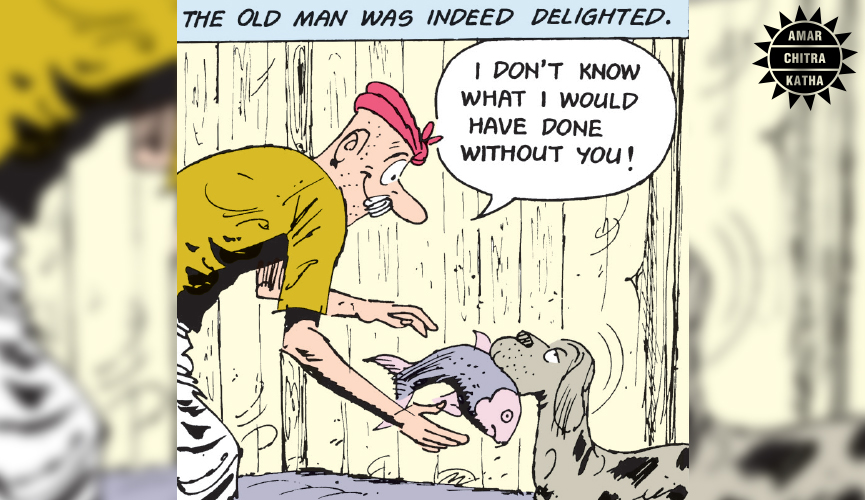
The next day, the scent of the rice wafted through the village again. As usual, people flocked to the man’s hut to buy rice. The cat, too, smelled the familiar aroma. He sneaked back into the house, purring at his master’s feet.
“Oh, it’s you. Welcome home,” the master remarked, serving him a ladle of rice.
The dog looked at the cat questioningly.
Feeling his eyes, the cat said, “I felt so homesick, I just had to come home.”
The dog huffed, knowing the truth. “Don’t lie to me, cat, I know you smelled the rice.”
The cat, the dog and their kind master lived happily ever after, never losing the magic conch again.
Read more folktales of India in our title Legend and Lore, available on the ACK Comics App, Kindle, Amazon, Flipkart, and other major e-tailers.




